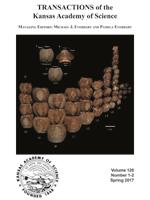Former agricultural terraces in a suburban setting were analyzed for evidence of ecological benefits related to surface water runoff. Presence of hydric soils was utilized as an indicator of runoff velocity retardation and associated reduction of suspended contaminants in surface water. Soils were probed in various topographic positions within a terraced hillslope on the Johnson County Community College campus and assessed for hydric soil indicators using procedures published by the U.S. Department of Agriculture. The soils in the constructed terrace channels were found to be hydric, and the soils in the terrace ridges were found to be non-hydric. These findings indicate that the legacy terraces are contributing to improved water quality lower in the watershed even 30 years after the conversion of the land from agriculture to a college campus surrounded by suburban development. Finally, the methods utilized in this study are offered as an easily and rapidly deployed way for land owners to describe and document these ecological benefits of legacy agricultural terraces.
How to translate text using browser tools
1 April 2017
Legacy Agricultural Terraces as a Sustainability Asset: A Rapid Assessment Technique
Fabian M. Shepard,
Colin C. Smalley
ACCESS THE FULL ARTICLE
hydric soils
runoff
sustainability
terraces
water quality





